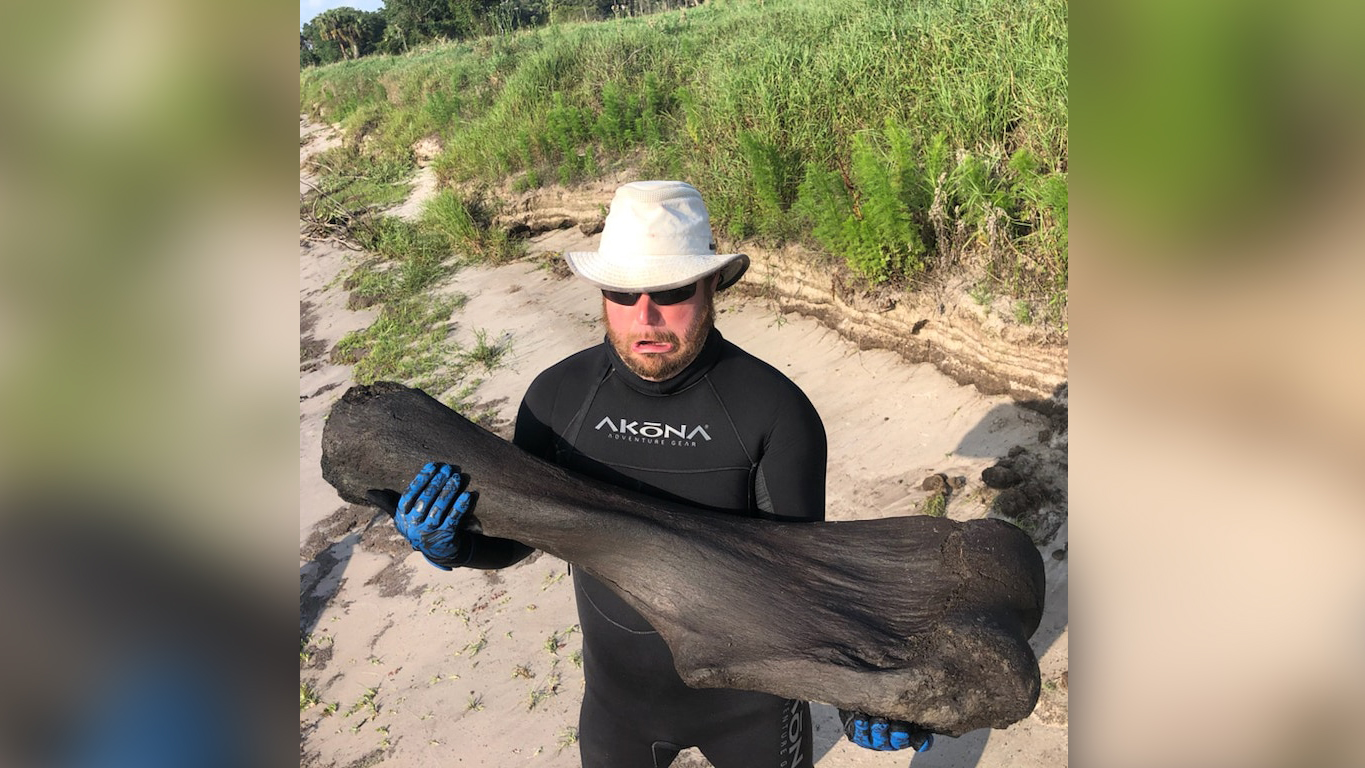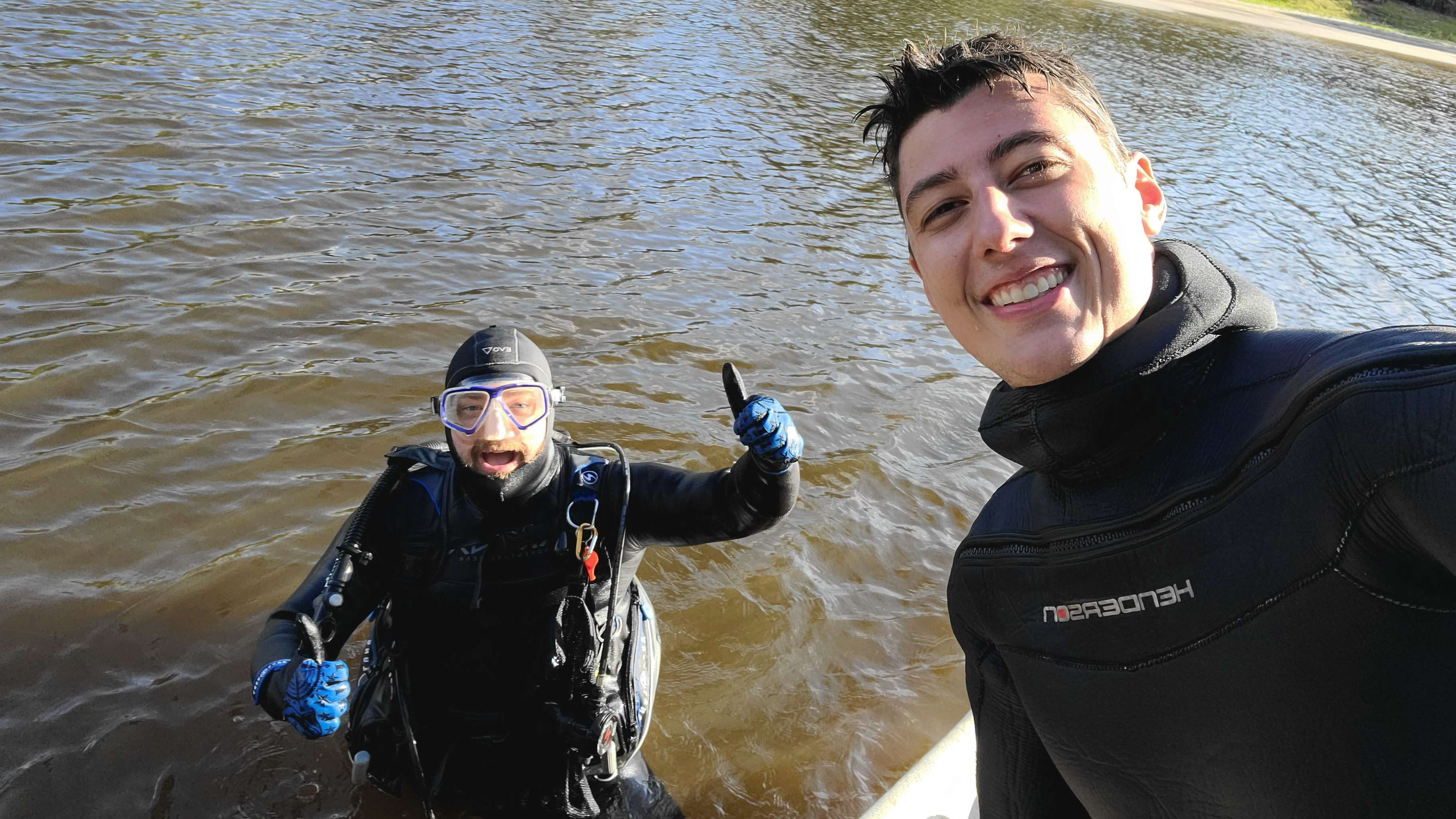Divers discover massive thigh bone from Ice Age mammoth in Florida river
Two divers found the bone in the Peace River.

Divers in Florida made a monster find on Sunday (May 2): A 4-foot (1.2 meters) mammoth leg bone.
The divers, Derek Demeter and Henry Sadler, found the 50-pound (22.7 kilograms) bone in the Peace River near Acadia, Florida.
"Henry is my dive buddy," Demeter, who is the planetarium director at Seminole State University, told Fox 35. "He yelled out to me, said, 'Hey, Derek. I found something!' Oh my goodness!' It was really, really cool."
Related: 10 extinct giants that once roamed North America



The two friends dive regularly in southwest Florida, and they have previously found mammoth teeth in the river. The same day they discovered the leg bone, they also found several small fossils from extinct sharks and the tooth of a saber-tooth cat, they told the news station. The new mammoth bone was buried in a layer of sand. Its age is unclear, but Columbian mammoths (Mammuthus columbi) roamed as far south as Costa Rica during the last Ice Age. In 2011, scientists confirmed that fossils found on Vero Beach in southeast Florida were mammoth bones from about 13,000 years ago. The Columbian mammoth was probably a hybrid between the woolly mammoth and an unknown lineage of mammoth that arrived in North America from Siberia around 1.5 million years ago, according to recent DNA research.
The new bone is a mammoth femur, or thigh bone. The animal it belonged to could have grown up to 14 feet (2.25 m) tall and could have weighed up to 22,000 pounds (10,000 kg).
The amateur archaeologists have donated several finds to the Florida Museum of Natural History. Sadler is keeping the bone in the middle-school classroom where he teaches in order to engage kids in the ancient history of Florida.
Sign up for the Live Science daily newsletter now
Get the world’s most fascinating discoveries delivered straight to your inbox.
"It's currently sitting in the classroom where the kids are able to see it, touch it, feel it and really get a history of the natural world," he said.
Originally published on Live Science.

Stephanie Pappas is a contributing writer for Live Science, covering topics ranging from geoscience to archaeology to the human brain and behavior. She was previously a senior writer for Live Science but is now a freelancer based in Denver, Colorado, and regularly contributes to Scientific American and The Monitor, the monthly magazine of the American Psychological Association. Stephanie received a bachelor's degree in psychology from the University of South Carolina and a graduate certificate in science communication from the University of California, Santa Cruz.










